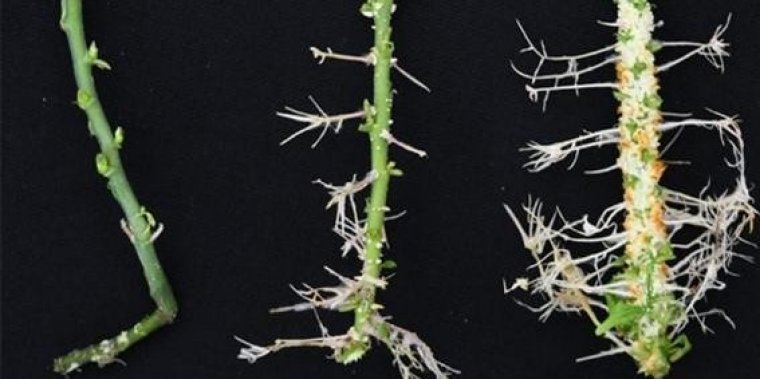| News / Science News |
At the root of bulked-up plants
Oak Ridge National Laboratory scientists identified a gene “hotspot” in the poplar tree that triggers dramatically increased root growth.

Two hybrid poplar plants, middle and right, engineered with the PtrXB38 hub gene exhibited a drastic increase in root and callus formation compared with a wild-type control plant, left. Photo: Tao Yao/ORNL, U.S. Dept. of Energy
The discovery supports development of better bioenergy crops and other plants that can thrive in difficult conditions while storing more carbon belowground.
The team used a vast poplar dataset to identify regulator genes that can trigger hundreds of other gene expressions in the tree.
They confirmed the molecular function of one hub gene, PtrXB38, and found that plants with the gene produced prolific and deeper roots.
The gene even stimulated the growth of aerial roots on stems and leaves.
“With more roots, these plants absorb more nutrients, grow larger, are more tolerant to drought and can draw more carbon underground for longer-term storage,” said ORNL’s Wellington Muchero.
The aerial roots may also make the plant more tolerant to flooding.
“This naturally occurring gene has implications for biomass production, food production and climate change mitigation.” said Stephanie Seay.
YOU MAY ALSO LIKE





